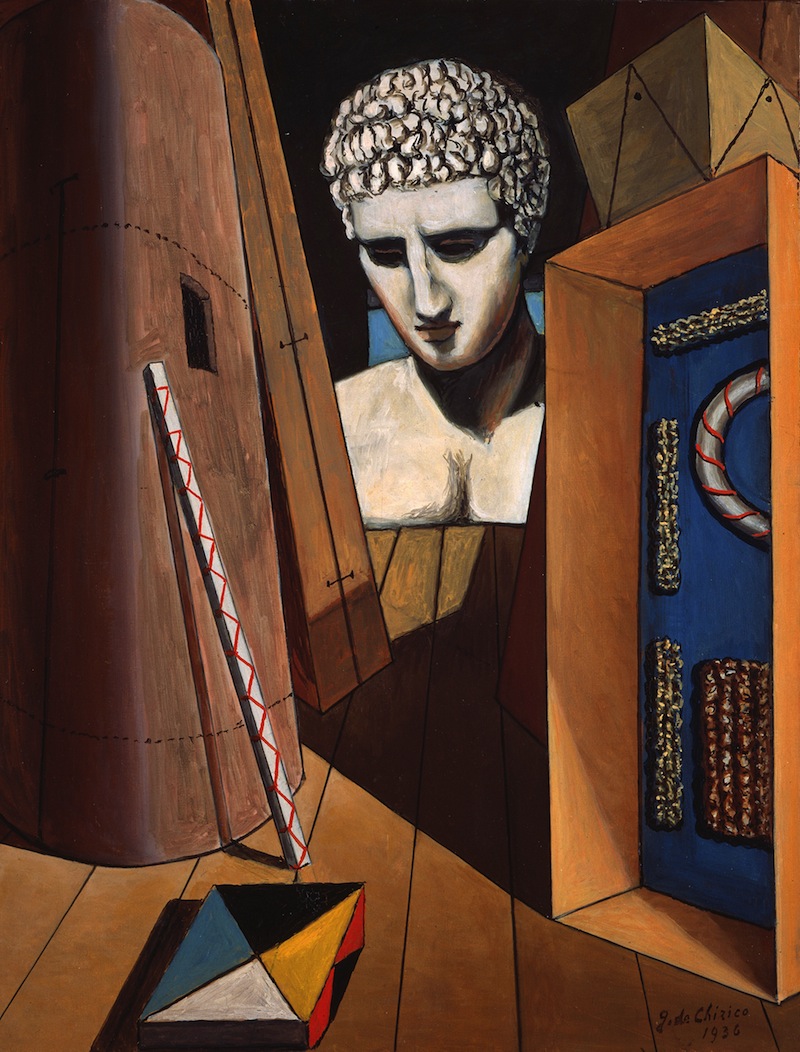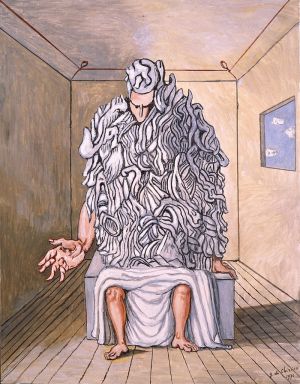24 February – 1 May 2016
Pera Museum is presenting an
exhibition of Giorgio de Chirico, The
Enigma of the World. Realized in
collaboration with the Fondazione Giorgio e Isa de Chirico in Rome, the
exhibition includes a broad selection of 70 paintings, 2 lithography series,
and 10 sculptures of the iconic Italian painter Giorgio de Chirico.
The inventor of the Metaphysical Art and
one of the most extraordinary artists of the 20th century, Giorgio de Chirico’s father Evaristo de Chirico was born in
Istanbul. This exhibition represents an ideal return and an occasion of genuine
discovery. Birthplace of the artist’s father, Evaristo, a railway engineer and
19th century gentleman, Istanbul was the family’s city of residence while the
grandfather, Giorgio Maria (whom the artist would be named after), was working
as a dragoman, or diplomatic interpreter, for the Sublime Porte. The family, of
Italian origins, with strong ties to their native land, was actively involved
outside Italy particularly in Turkey and Greece.
During the years he studied at the Munich
Academy of Fine arts between 1906 and 1909, de Chirico was influenced by the
works of philosophers such as Nietzsche, Schopenhauer, and Otto Weininger, as
well as the art of Arnold Böcklin and Max Klinger. His invention of
Metaphysical Art in Florence in 1910, his theoretical writings and the corpus
of his early period metaphysical paintings would prove to be a strong source of
inspiration for the Surrealists. The artist was both a versatile and colourful
individual; focusing on the subjects of memory, dreams, and the enigma of the
world, he distinguished himself from other great artists of his period. He was
a trailblazing, multitalented artist that had a profound impact on masters like
Magritte and Dali.
The elegant exhibition design retraces
almost 70 years of de Chirico’s artistic career from the dawn of Metaphysical
Art to the iconographic themes of the 1920s and 1930s, to research into
classical painting technique, up to the splendid ultimate period of
Neo-metaphysical Art of 1968-1976 in which a renewed painterly, conceptual and
philosophical vision comes to light in works in tune with contemporary Pop Art.
The exhibition brings together a striking collection of extraordinary
inventions and recurrent innovations, which, seen as a whole, bring to mind
Nietzsche’s idea of ‘Eternal Return’.
The exhibition, which also includes one of
the artist’s earliest paintings (1909), encompasses a large selection of works
extending particularly from the 1920s until his final period of the mid-1970s. As
Fabio Benzi, the curator of the exhibition mentions in his article in the
exhibition catalogue, “Among the foremost
artists of the 20th century avant-garde, in 1910, de Chirico
fine-tuned a vision, ‘Metaphysical Art’, which together with those of his
contemporaries Picasso, Matisse, Kandinsky, Balla and Malevic, constitute the
great pillars of contemporary art. In particular de Chirico, whilst avoiding
formalist and abstractive research such as the chromatic and expressionistic
exaggerations of his great colleagues, projected his own quest into the theretofore
unexplored territories of the dream, the mystery of the world and of memory,
thus tracing a high road that would lead to Surrealism and to all artistic
expression that refer to the unconscious.”
‘Mercury’s Meditation’, c 1973, oil on canvas, 65 x 50 cm, Fondazione Giorgio e Isa de Chirico Collection
Giorgio de Chirico is one of the most extraordinary figures of the 20th
century, a period marked by consecutive avant-garde movements. During this rich
period that brought to fore different forms and modes of expression rather than
themes in painting, de Chirico, as distinct from his contemporaries, created a
unique metaphysical universe in which he developed a variegated complexity of
subjects. His Metaphysical Art was seminal and eye opening both for his
contemporaries and for the subsequent generations.
‘The Meditator’, 1971, oil on canvas, 90 x 70 cm, Fondazione Giorgio e Isa de Chirico Collection
‘The Meditator’, 1971, oil on canvas, 90 x 70 cm, Fondazione Giorgio e Isa de Chirico Collection
Throughout his 70 year-long career, de Chirico moved from hermetic
representations and images evoking the pathos of antiquity, to works akin to
great classical painting, to paintings of a luminous naturalism and other,
brilliantly ironic and playful images. At 80 years of age, during his final
neometaphysical period, he revisited his most iconic subjects such as the
Italian Piazza, the Mannequin and the Metaphysical Interior, newly interpreting
these with bright colours and serene atmospheres compared to the severe and
disquietening ones of his early years. The exhibition at Pera Museum sheds
light upon the artist’s unique, free and endless search and the artistic
adventure he undertook and which would reshape the course of 20th
century art.




